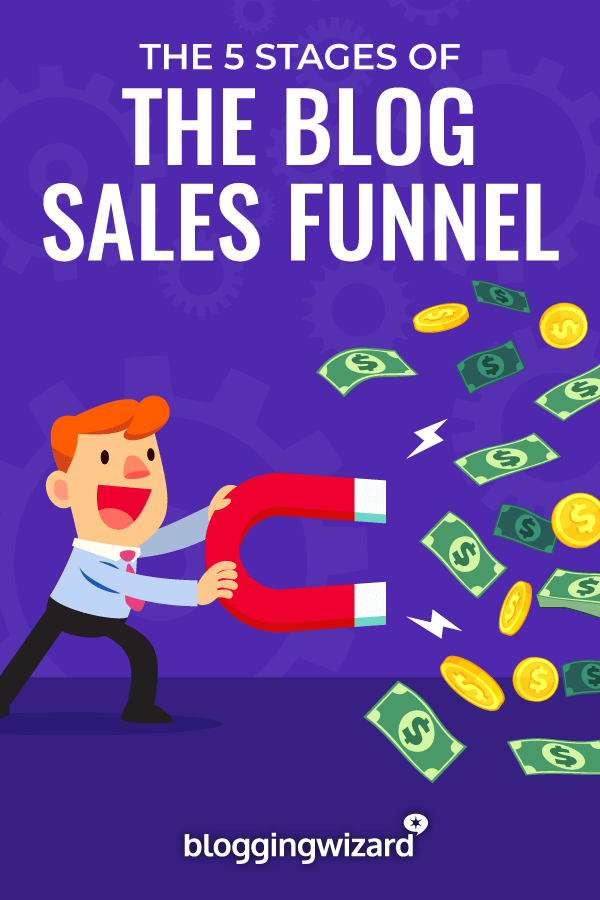The 5 Stages Of The Blog Sales Funnel And How To Use Them
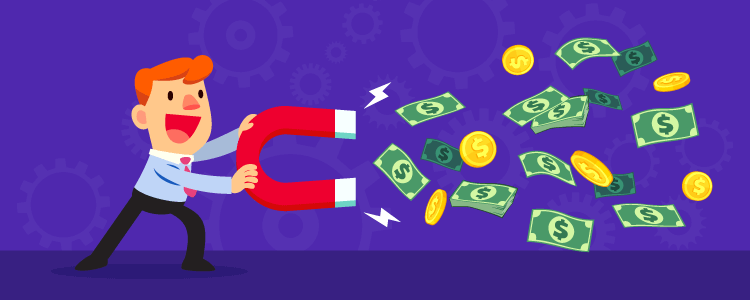
Back in the dark ages of 2014, amidst shrill renditions of “Let it Go” and people drenching themselves in ice water for ALS, the term “content marketing” started to gain some traction.
While content marketing has existed in one form or another for at least the past two hundred years, it was only in 2014 where, championed by the likes of Neil Patel, Joe Pulizzi, and Seth Godin, that the business world began seriously investing time and effort into creating content marketing strategies.
But many things have happened in the past four years.
Snapchat exploded onto the scene, only to seemingly disappear into obscurity overnight, Pokemon Go was simultaneously the most exciting and disappointing launch for people everywhere, and for some reason, killer clowns were a thing.
But most importantly, for the purposes of this article anyway, content marketing continued to evolve.
Soon, it took more than having a few evergreen articles or a viral video to qualify as effective content marketing. As audiences and consumers got smarter, so did we.
Therefore, without further ado, here is what the modern blogging sales funnel looks like and here’s how you can use it.
The sales funnel
In order to really understand and appreciate the modern blogging sales funnel, you must first understand what the modern sales funnel looks like.
Traditionally speaking, a sales funnel is pretty simple if you follow the AIDA model of: Attention, Interest, Decision, and Action.

The goal of marketing was to drive people in through this funnel until they finally made a sale. At every stage, you, the marketer, would have to be providing prospects and leads with a reason to continue going down the funnel.
While there are many variations of this funnel, and you can certainly add in more steps along the way if you require more time to nurture a lead, it all basically ends in a single sale. Once someone has made a purchase, they are out of the funnel.
However, today, a sales funnel now looks more like this:
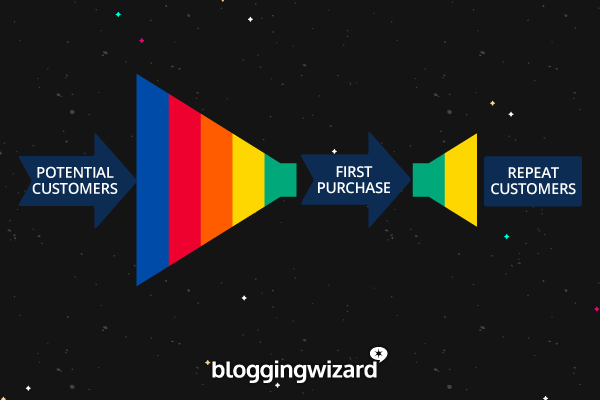
As you can see, the sales funnel itself has expanded; there is now a distinct front-end and back-end.
Jokes involving Sir Mix-a-Lot aside, businesses and marketers alike have all come to the realization that a customer’s journey doesn’t end once they’ve made a purchase.
In actuality, if nurtured properly a customer can become a repeat or lifelong customer and can be encouraged to continue purchasing more products for the foreseeable future. The initial offering now being viewed as a primer to encourage customers to purchase more.
What used to be the endpoint with a single sale and offering is now the middle of a funnel, which continues to push customers down to the back-end where more profits can be made.
For example, the majority of profits made from selling a Barbie doll isn’t from the sale of the doll itself, but of it’s accompanying accessories which can be purchased separately.
With that in mind, here’s how the sales funnel relates to content marketing.
A brief history of content marketing
Content Marketing 1.0
Once upon a time, content marketing was very simple. You would spend a few days working on a killer article that would be so well-researched and in-depth that everyone would be referencing it; to the point where achieving the number 1 spot on Google would almost be a given.
Back then, the primary focus of content marketing at the time was all about exposure.
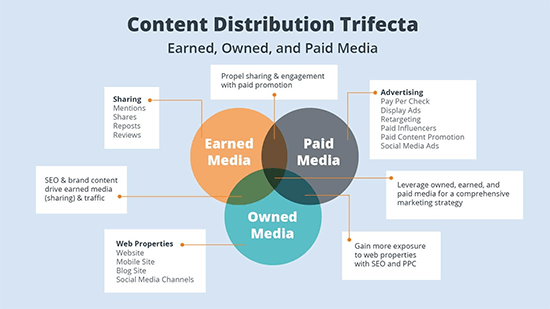
Content marketing was just another way to get people aware of your brand and your business by establishing yourself as an authority in the niche.
SEO-wise, it was much easier in 2011 and 2012 to rank on Google than it is now. The rules were simple: as long as you could consistently put out content that people enjoyed, as well as get that content in front of the right people, then your audience would naturally gravitate towards visiting your website.
The goal was simply to have as many people visit your site as possible, and hope that they would stay on the site long enough to purchase something on offer. Or, if you didn’t happen to have your own business, to continue establishing your level of influence and authority in order to make money off of affiliate sales or ad revenue.
Content Marketing 2.0
Until, of course, the arrival of what I like to call “Content Marketing 2.0”.
At some point, brands began creating and utilizing content for more than just exposure. They began creating specific pieces of content in order to sell products.
The most basic form of this was to create a popular piece of content and to add a strong CTA either throughout or at the end of that piece. The distance between awareness and purchasing shortened as more content marketers began to understand that their content could be used to generate awareness and nurture leads at the same time.
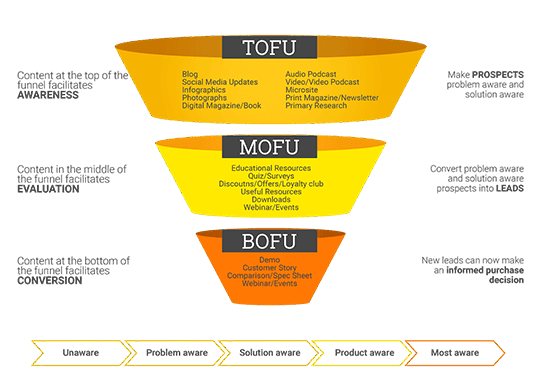
Soon, different types of content began gaining traction, as well as the different channels where you could market that content. Storytelling soon became an integral part of content marketing, and brands began sharing all types of content across all forms of social media.
Infographics briefly supplanted blogs as the go-to form of content, and content marketers around the world began exploring different ways to make their content more strategic and niche in order to stand out from the increasingly crowded market.
Which brings us to today.
Content Marketing 3.0
No longer is content marketing relegated to specific stages of the sales funnel. In order to effectively take advantage of the modern sales funnel, you need to be able to be able to create pieces of content for each stage of the funnel.
That means making sure that for every stage of the funnel you have something to present a customer or lead- at any given time. This is done in order to continuously provide value to the customer, further establish your authority, and prime them for the next purchase.
With the basic blogging sales funnel looking like this:
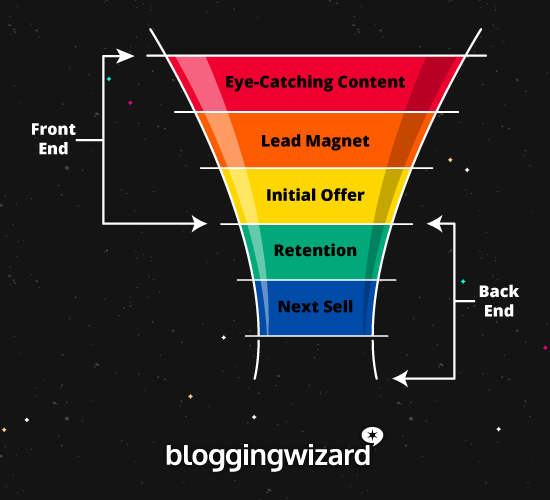
Content marketing these days has shifted from having to aim for wide appeal in order to generate as much awareness as possible, to becoming as personalized as possible. Content marketing no longer ends with one piece of content, with many marketers using a multi-channel approach.
It’s now commonplace to find content marketers leveraging everything from articles, to eBooks, to emails in order to continue pushing people down the sales funnel.
Content marketing 3.0 is all about being hyper-focused on the customer and leveraging all the technology available to achieve that goal.
The 5 stages of the blog sales funnel
Stage 1 – The eye-catcher
When it comes to creating content for the top of the sales funnel you have to assume that your audience knows very little about you or your brand. Chances are they might not even be completely aware that they’re experiencing a pain point, let alone that there is a service out there designed to help them.
The goal of your content, for this stage of the funnel, is to both establish awareness of your brand and establish yourself as an authority. Meaning the type of content you produce will have to have as wide of an appeal as possible, while simultaneously being filled with useful information.
The type of content you produce will generally depend on what who your audience is.
For content-heavy businesses like Social Media Examiner they achieve this by regularly publishing high-quality information that they know interests their audience.
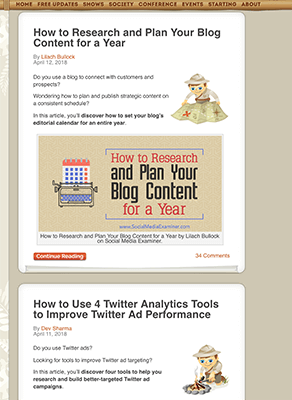
Social Media Examiner is able to naturally draw traffic to their site and gain more exposure due to the fact that they consistently publish original content about a specific niche. At the same time, they are also able to position their brand as one that is an expert in its space and build a sense of loyalty with their audience.
To generate further exposure and attention for their content, Social Media Examiner will also further promote their content through channels like social media.

Consider the fact that the type of content you’re producing for this stage of the funnel should appeal to as many of your target audience as possible. You have to assume that people who are interested in this type of content are completely unaware of how to solve their problem, so the information should be as basic and introductory as possible.
Keep in mind that you don’t necessarily need to create written content as well. Take for example the 15 Seconds of Smart campaign by Farmers Insurance. These were short 15-second videos designed to educate their audience about insurance opportunities while still being easily digestible and shareable.
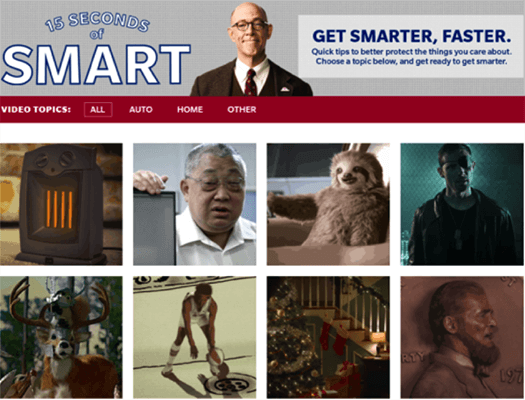
At this stage, all you’re trying to do with this type of content is to build your credibility and draw more visitors to your blog. While the value of these visitors as leads are low, there is no guarantee that they’ll purchase from you, they are now at the very least aware of your brand and the services you provide.
Now that you have their attention, it’s time to move them into the next stage of the funnel.
Stage 2 – The lead magnet
The next step in your blogging sales funnel is to create a piece of content specifically designed to get someone onto your email list.
The reason why I specify your email list is because your email list is, by far, your most valuable marketing channel. For years email marketing has consistently outperformed every other digital channel when it comes to acquiring new leads, sales, and customers. Email subscribers are 3x more likely to share content on social media than leads who are acquired through another channel.
With that in mind, the goal of your content at this stage of the funnel is to turn someone from a casual visitor to someone who is actively engaging with your brand. That means having them subscribe to your email list so they can start receiving your content directly from you and not from some other source.
Which is where the lead magnet comes in.

In general, a lead magnet is a small freebie which a prospect can access in exchange for their email address. Unlike your content at the top of the funnel which is designed to appeal to as many as people as possible, with your lead magnet you can now employ a more specific and targeted approach with your content.
A lead magnet can be anything from an eBook, a webinar, or even a mini-training course. Keep in mind that people in this stage of the blogging sales funnel are looking for information that is specific and actionable. They’ve identified their pain point and are actively looking for solutions.
Digital Marketer is notorious for using a variety of lead magnets to both capture new leads and nurture pre-existing ones.
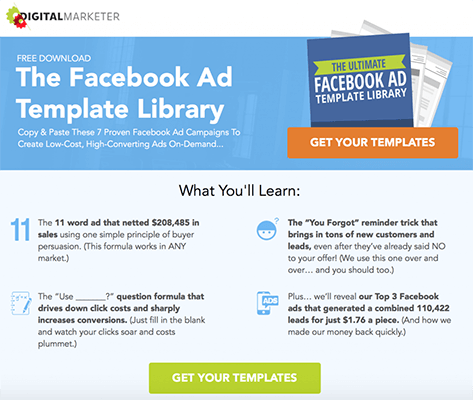
While you can promote your lead magnet directly through things like pop-ups or sharing them on social media, you’ll often that you’ll achieve much better results when you pair that lead magnet with a relevant piece of content instead. Brian Dean famously boosted his conversions by 785% in one day by utilizing this tactic.
Think of your lead magnet almost as an add-on to a pre-existing piece of content. You can see how places like Foundr have a big red button in the middle of their blog articles drawing their reader’s attention to their relevant lead magnets.
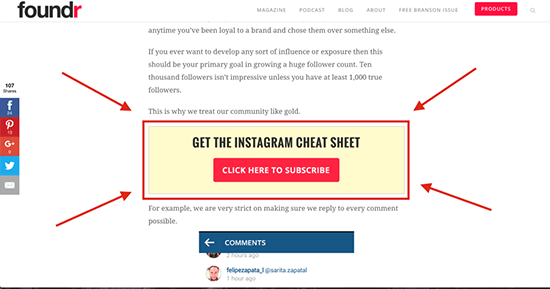
Don’t be afraid to think outside the box as well when it comes to the type of content you can create for this stage of the funnel. BuzzFeed famously uses quizzes as a way to not capture leads and engage with their audience, but to also gain more insight and data about them as well which allows Buzzed to further personalize each user’s content.

Note: In order to create quizzes, you’ll need a tool to help you. Check out these quiz maker apps to get started.
At this stage of the funnel, you aren’t limited to using only one piece of content. You can continue nurturing your leads through multiple lead magnets until you feel like you have enough information to take them to the next stage of your blogging sales funnel.
If you need more lead magnet ideas, be sure to check out this post over at Startup Bonsai.
Stage 3 – The initial offering
By this point, you’ve gained your audience’s attention and they’re interested in learning more about what you have to offer. This is when you make your first sale.
Traditionally once you’ve reached this point and made a sale the customer journey is over. But in the modern blogging sales funnel, your first sale really is just the beginning. Now is the time where you turn a one-off customer into a lifelong one.
But to get to that point you need to be able to create a compelling initial offer.
What product or service you initially offer depends on your own business. But the rules of thumb are:
- Your initial offer should have a lower price point, but would ideally cover the cost of acquisition
- Packed with value and actually offers the ability to solve a genuine pain point
- Provides opportunities for further engagement
A great example of this would be how Yaro Starak of Entrepreneur’s Journey uses eBooks about blogging and productivity as his front-end product.

All of these products are at a low price point at around $49 each, and each of them are packed with useful and actionable information that his audience wants.
Yaro even takes it a step further adding another lead-nurturing step to his blogging sales funnel where he’ll upsell the customer to a short online course at a higher price point. These short courses are offered only through email and only to people who have purchased his initial offer.

Online courses and subscription services are a great initial offer as it gives you the ability to repeatedly engage with your customers. Whether it’s through something basic like a Facebook group where students of your course can exchange ideas. Or something more direct where you can drip-feed your online course over a period of several weeks.
What you’re effectively doing with your initial offer is priming your customer for your next offer. By creating a compelling initial offer, and delivering on your promises, you’re further establishing that sense of trust and credibility.
While it is important to make sure you get the front-end product right, don’t spend too long on it as the real money is made in the next stage.
Stage 4 – The follow-up
For many blogs the bulk of where the profits are made is through the back-end. The back-end is made up of more expensive products which are offered almost exclusively to existing customers. This is the key part of your blogging sales funnel.
By now you might be wondering why to go to all the effort to create multiple products to offer along with new content for each of these products. Well, the fact of that matter is that it’s much easier to sell to someone if they’ve bought from you before.
According to Invesp it can cost up to five times as much to attract a new customer compared to retaining an existing one. Plus, over 61% of small businesses report that more than half of their revenue comes from repeat customers and clients.
By creating a sales funnel with multiple offers what you’re effectively doing is the overall average lifetime value (ALV) of each customer that visits your blog, and therefore increasing your overall bottom line.
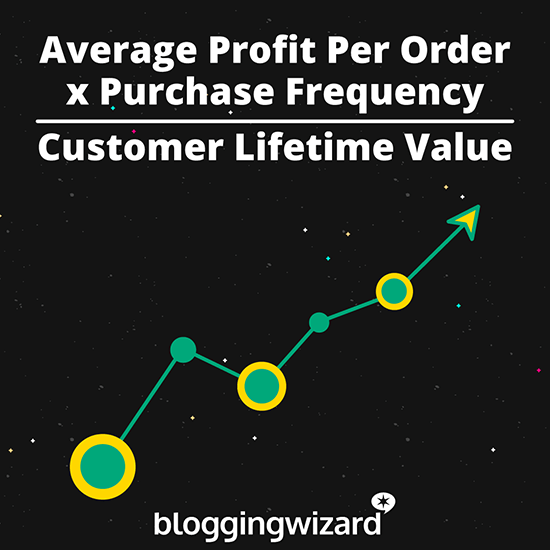
The next stage in your blogging sales funnel after someone has purchased your initial offer is to continue nurturing them as a lead and giving them a reason to remain loyal to your brand. This is when you start creating content that’s been tailored to specific segments of your customers based upon the data you’ve gathered so far.
Create automated email campaigns based upon a customer’s purchase history. It can be as easy as including another product offer in your “order confirmed” email.
Many online retailers will take advantage of this simple tactic, like Harry’s for example who sends the following email to anyone has purchased one of their products.

Harry’s, as a retailer that sells shaving products, knows that their customers will likely be interested in purchasing a foaming feel to go along with their recent order as it will relevant to their current interests.
Another example of behaviourally targeted email campaigns is Spotify who will, based upon what artists and genre of music their users enjoy, send out offers for concerts and merchandise that they know their users will appreciate.
They’ll even notify users when their favorite artists release any new music, and will even give out updates for interviews and special recordings available only on their platform.
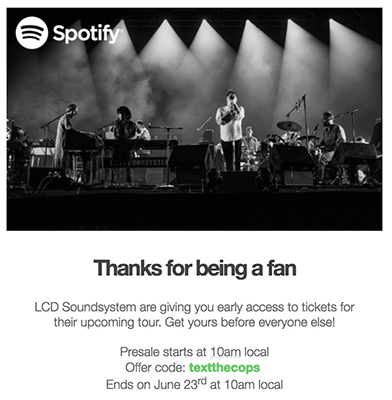
Although for those of us who don’t have the power of major brands behind us, all you have to do is make sure that you’re only sending out offers and content that you know for sure is relevant to that particular user’s interests. If you know happy to have an eBook about social media marketing, instead of sending it to your entire audience only send it to a segment that has shown interest in email marketing beforehand.
Surprise those who took up your initial offer by continuously sending them valuable content for free.
It could be just another eBook, some cheat sheets, or even a hidden module in your short course. A simple thing like this will make not only keep your customers happy but ensure that they’ll be interested in what you have to offer next.
Stage 5 – The next sell
Now we head into the final stage of your blogging sales funnel and where the big profits are made.
By the time someone has reached this stage you know for sure that they are routinely engaging with your content, have purchased from you before, and are responsive to most, if not all, of your efforts to engage with them. At this point you’ve built up a huge amount of authority with your audience and it’s a lot easier to make sales.
On average less than 5% of prospects who entered your blogging sales funnel will end up at this stage. Don’t worry too much though, because now is when you can start selling your big-ticket items.
While there is no set formula for how much you can sell your back-end products for, there are content marketers out there who sell products up to thousands of dollars.
Digital Marketer, for example, sells up to ten online courses all of which are priced at $995 each.
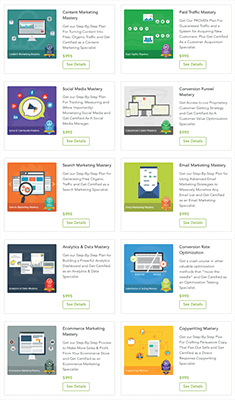
While the high price point will be a turn off for new customers, Digital Marketer will smartly only offer these courses to those who have reached the end of their blogging sales funnel. They know that their back end is made up of only the most dedicated and loyal customers.
Also, notice the range of topics the above online courses cover. Digital Marketer won’t notify everyone on their mailing list about these courses. In fact, they’ll only offer specific courses to users who they know will be likely to buy based on the data they’ve gathered. Creating a well-matched and highly-targeted offer that is almost guaranteed to sell.
For your own blogging sales funnel you don’t have to create multiple online courses for your back-end product. Some content marketers offer consulting services, while others give their customers the opportunity to attend private events or boot camps.

Like Digital Marketer you can offer a variety of products in the back end, or you can offer just one depending on what your business is.
But before you immediately start selling your next product to your prospects make sure you take the time to optimize your back end as much as possible. Figure out what products to offer, what price points to use, and the order in which to offer them. While this can take a bit of time to figure out once you get it right it can revolutionize how you make money with your business.
Wrapping it up
And there you have it. The modern blogging sales funnel. Content marketing 3.0.

Now that you know what it looks like keep an eye out for it whenever you’re purchasing something online. You’ll often find that many businesses, especially content marketers, will utilize this type of sales funnel in some way shape or form.
While building a sales funnel like this can take a lot of time and energy. I can guarantee that this is the key to long-term profits and sustainability for your business.
The best thing about these types of sales funnels is that, as long as the content you create and the products you sell are evergreen, you can automate the entire process.
Meaning that once you set up and optimized your blogging sales funnel you can leave it alone and focus on other areas of your business while your sales funnel makes money for you in the background.
So what are you waiting for?

